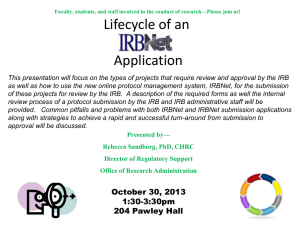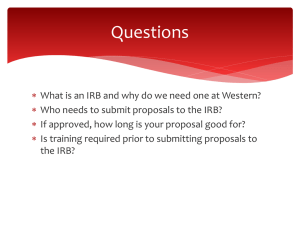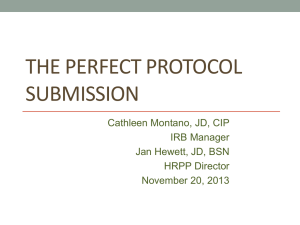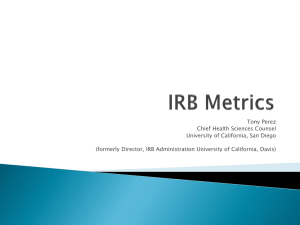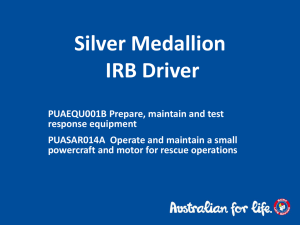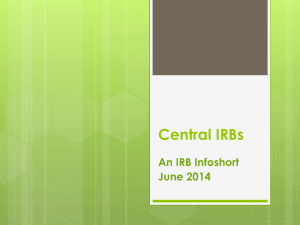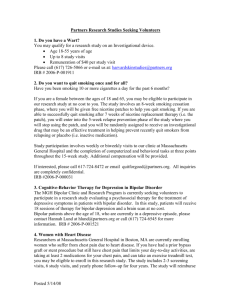Response to the Draft NIH Policy on the Use of a Single IRB
advertisement
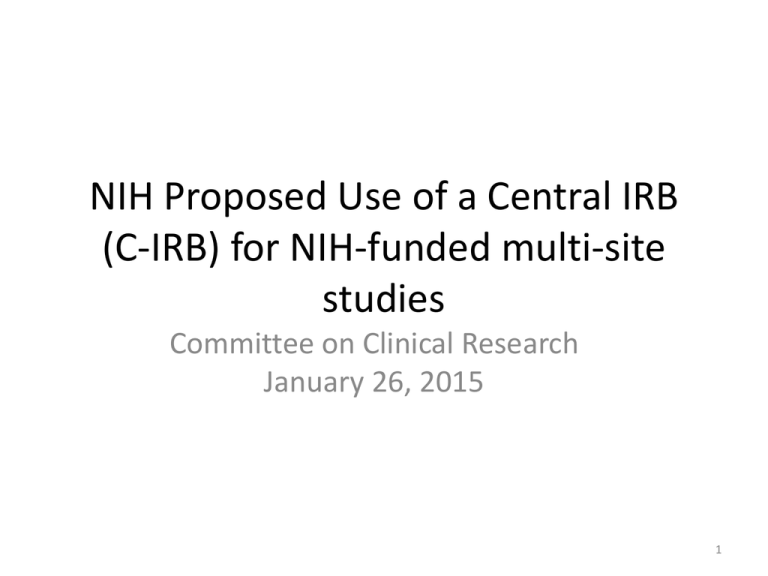
NIH Proposed Use of a Central IRB (C-IRB) for NIH-funded multi-site studies Committee on Clinical Research January 26, 2015 1 Clinical Research Program submission of MGH faculty comments on NIH’s draft policy requiring • NIH-funded multi-site clinical studies carried out in US mandated to use Central IRB (C-IRB) • exceptions for site to use local IRB require justification MGH comments summarize the collective opinions of MGH clinical investigators. 2 Define Responsibilities of C-IRB and the Institution. IRB primary role per federal regulations: Protecting human subjects involved in research. Additional responsibilities delegated to IRBs over years – educate investigators about federal regulations (FDA, HIPAA, COI, etc.), – document investigator’s chief approval to conduct a study, – document approval by key ancillary department(s) – investigate allegations of misconduct. Suggested faculty recommendation to NIH – Final Rule present models of allocation of responsibilities to the C-IRB and those to be retained by the institution – define the entities to be held accountable for IRB and investigator infractions / misconduct 3 The Central IRB Business Model: Currently, IRB does not charge for initial or continuing review for NIH-funded studies. Final NIH rule should clearly state – how the C-IRB will be paid for initial protocol review, continuing review, amendment review, AE/SAE reports, etc. – what, if any, administrative documentation the local IRB will be required to maintain. – the indirect costs included award are intended to cover IRB administrative costs. 4 Information technology considerations: Currently, there are no specific data security protections for IRBreviewed research. – regulations require IRB’s to determine for each study “when appropriate [that] there are adequate provisions to protect the privacy and to maintain the confidentiality of data.” Recommendation: NIH should - address a minimum standard for data protection. – offer a secure site located on an institution’s intranet where the local IRB, site investigators, and CTSA, if applicable, can access IRB-approved documents , correspondence, meeting minutes 5 Tracking and publishing metrics: Currently, no metrics on time to IRB approval of a protocol from submission time. Recommendation: NIH should track and make publically available on a published schedule metrics on all C-IRBs which reports – time to initial approval of the protocol and study documents by the central IRB; – time to approval for submission of protocol amendments and other actions for which the central IRB will be responsible; and – time to approval from the time local site PIs submit information/documents required by the central IRB, and – the methodology for data collection from C-IRBs 6 Opportunity to Acquire Important New Data Currently there is no information on AEs/SAEs reported on studies approved by C-IRBs and Academic IRBs. Final Rule provides an opportunity to assess differences in risk assessment which may exist between C-IRBs and Academic IRBs. Recommendation: - while maintaining anonymity, develop a case mix adjusted methodology for tracking injury to subjects - set standards for safety/injury reporting 7 Harmonizing the rule across federal agencies: Currently FDA regulations for device studies link the local IRB to the parent institution. Recommendation: – FDA regulations should be revised prior to mandating the use of a single IRB for multicenter studies. This would address multicenter studies sponsored by other federal agencies (DOD, AHRQ, etc.) 8

